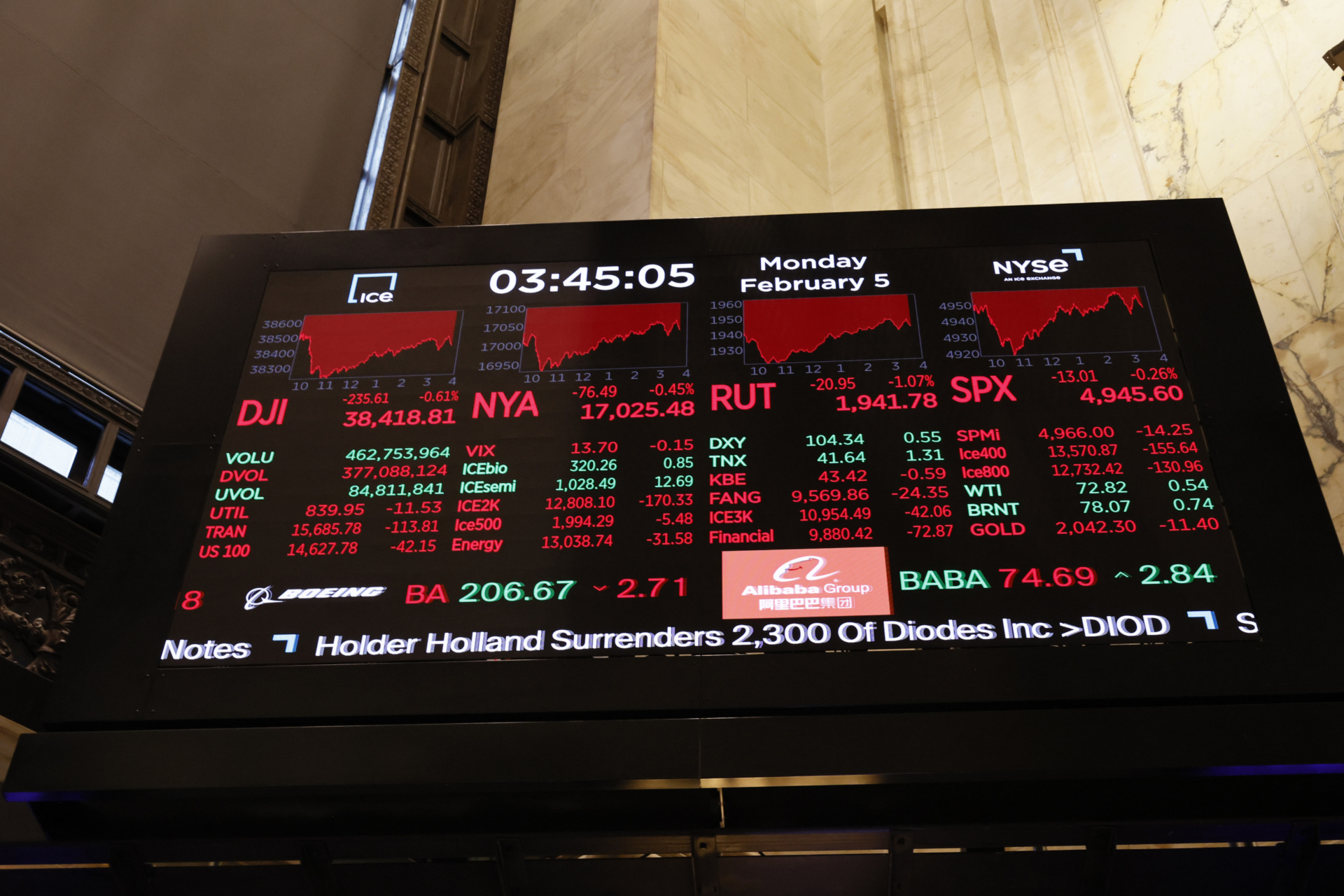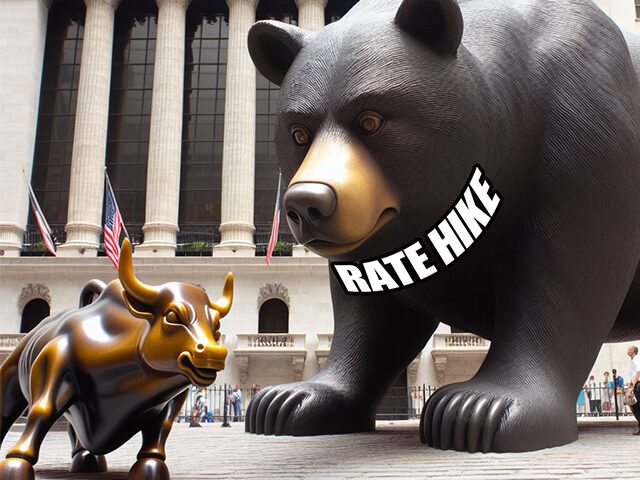The Market Thinks There’s No Chance of a Rate Hike
The most underpriced risk in financial markets right now is a rate hike from the Federal Reserve.
Prices of financial assets currently indicate an expectation that the Federal Reserve will cut at least five times this year. The fed funds futures market implied zero chance of just one cut, zero chance of two cuts, and just a six percent chance of only three cuts. The odds of four cuts are under 30 percent.
This is extraordinary given that Fed officials have been pushing back hard against the idea that they are on the cusp of starting to cut rates. The last time the Fed offered projections of its officials, the median view was for three cuts—the position the market is giving less than one-in-ten odds.
The “dot plot” is telling. Only a single Fed official at the December meeting forecast a fed funds rate below four percent. The market is currently assigning that outcome one-in-three odds.
Keep in mind that the Fed’s December projections were made without the benefit of data showing that the economy grew at a 3.3 percent pace in the fourth quarter. The Fed also did not have data showing that payrolls grew by a total of 686,000 in January and December or that quits would rise to nine million.
Quite the opposite. The labor market was presumed to be softening. Growth was expected to slow to two percent or lower. Personal consumption expenditure inflation was falling on a month-to-month basis.
In other words, the market’s confidence that the Fed’s actual behavior will be much more dovish than what the central bankers have projected seems to be founded on nothing but wishful thinking.
The Fed Is Convinced the Next Move Is a Cut
The Fed is still committed to the idea that it will cut rates this year. Jerome Powell made that clear in his press conference last week and his interview with 60 minutes. The question that Fed officials are considering is when it will be appropriate to cut. And that has implications for how much the Fed will cut.
The Fed took a March cut off the table last week, prior to the release of the January jobs numbers. It is safe to assume that a May cut is also off the table because the Fed thinks it needs more data to gain “greater confidence” that inflation is coming down sustainably—and it will not have that much more data by the May meeting than it had in March.

Stock market numbers are displayed at the New York Stock Exchange during afternoon trading on February 5, 2024, in New York City. Stocks were down amid speculation that the Federal Reserve is unlikely to make rate cuts in March. (Michael M. Santiago/Getty Images)
Pushing the start date out until June would make it very unlikely that the Fed cuts five times this year. That would require a cut at every subsequent meeting this year. Officials have said that the strength of growth and the labor market gives them the opportunity to reduce rates at a slower pace than past episodes, which we think means they plan to take a breather between cuts.
If the Fed cuts at every other meeting starting in June, that will leave it cutting just three times this year. Since this is in accordance with the projections of Fed officials, that’s probably a good baseline assumption.
We think the Fed is likely to start even later. July will be the one-year anniversary of the last Fed hike, so the Fed will be able to say it has a year’s worth of data to analyze to justify a cut. By July, the high inflation of the start of 2023 will have dropped out of the annual PCE price index; so if the monthly numbers stay moderate, the 12-month figure will look favorable for a cut. July, then, looks more likely than June.
The next Fed meeting after July is in September. We doubt the Fed will want to invite the kind of political backlash that would come with cutting rates just before the presidential election. The reputational risk is too great, and the cost of waiting until the November meeting for a second cut is likely to be minimal. It’s not as if the economy is going to slip into a recession because the Fed skips the September meeting.
If the Fed does choose to go slow, it would then skip December. That leaves just two cuts for the year, an outcome that the market currently prices as all-but-impossible. From our point of view, it is more likely than the five cuts currently priced in.
Here’s Why They All Could Be Wrong
While we expect the Fed will cut two or three times this year, the chances of a Fed hike are not zero.
The “immaculate disinflation” we have seen over the past seven or eight months is unlikely to continue. The economy has grown above its longterm potential, but much of that seems to have been driven by the normalization of supply chains and the recovery of labor force participation. Absent a strong lift in productivity—for which there is very little evidence so far—the kind of growth we’re seeing is likely to be inflationary later this year.
Keep in mind that there are plenty of other risks to rising inflation. For example, we have increasing conflict in the Middle East, raising the prospect of prolonged shipping disruptions and perhaps even higher oil prices. The war in Ukraine, which many had assumed would be quickly resolved, continues and may escalate. China‘s slump has probably been exporting disinflation, and its efforts to stimulate its economy could end that.
As we saw in yesterday’s report from the Institute for Supply Management (ISM), inflationary pressures are building in the services sector. The labor market is tightening, which is likely to cause renewed wage inflation which would feed price inflation.
Even a small rise in inflation could be enough—especially if prolonged—to convince Fed officials that they still need to raise rates to make monetary policy sufficiently restrictive.
The premature declaration of victory over inflation has led the market to assume that a victory parade of rate cuts will come marching down the boulevard this year. That looks increasingly unlikely.

COMMENTS
Please let us know if you're having issues with commenting.